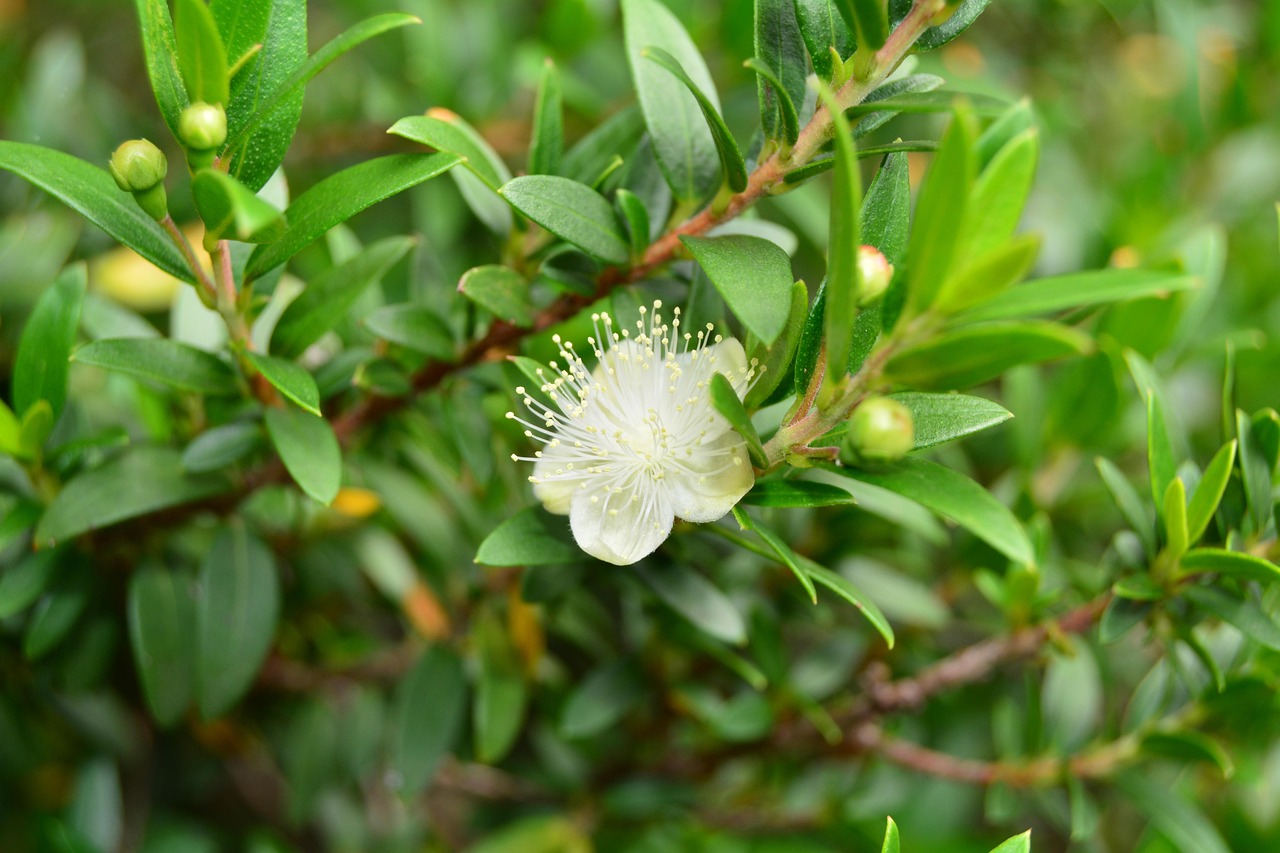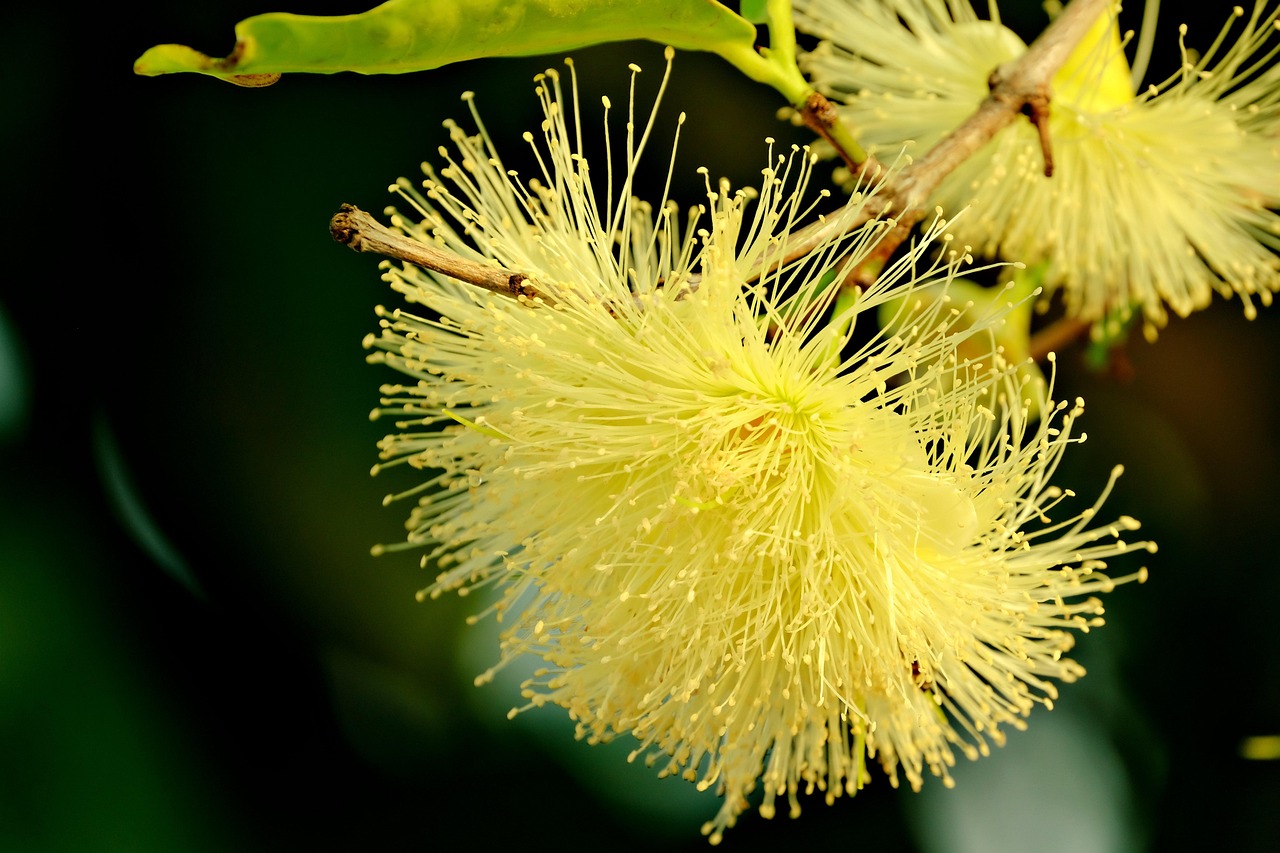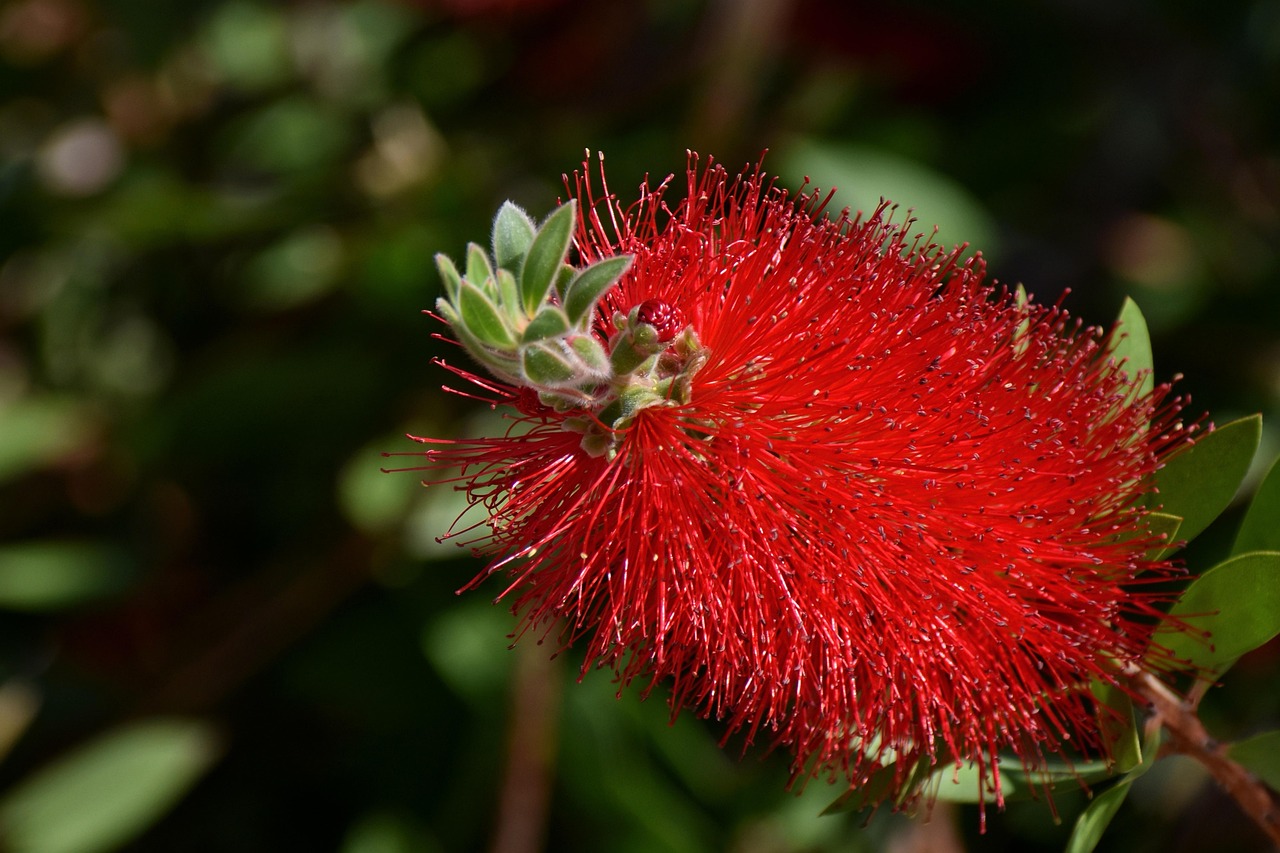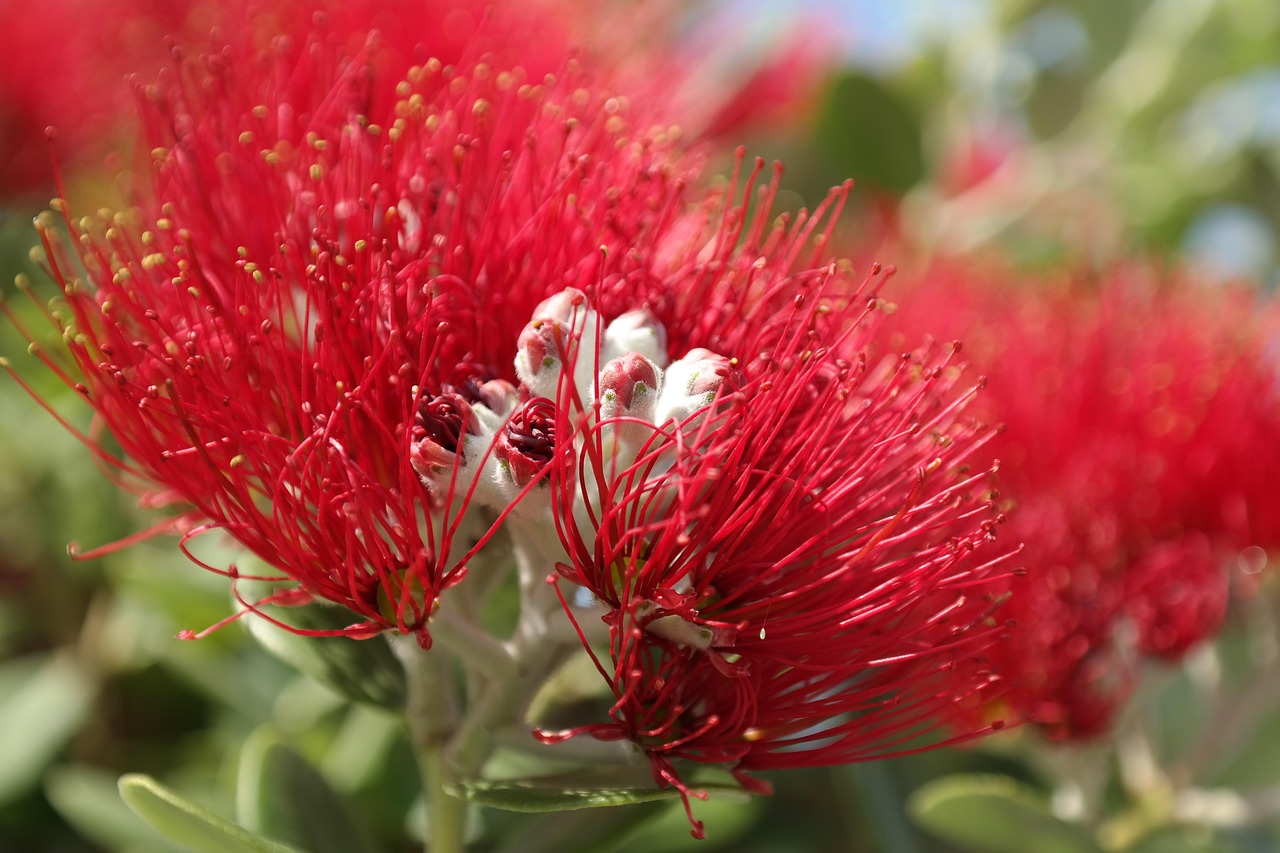Guava: Features and Care
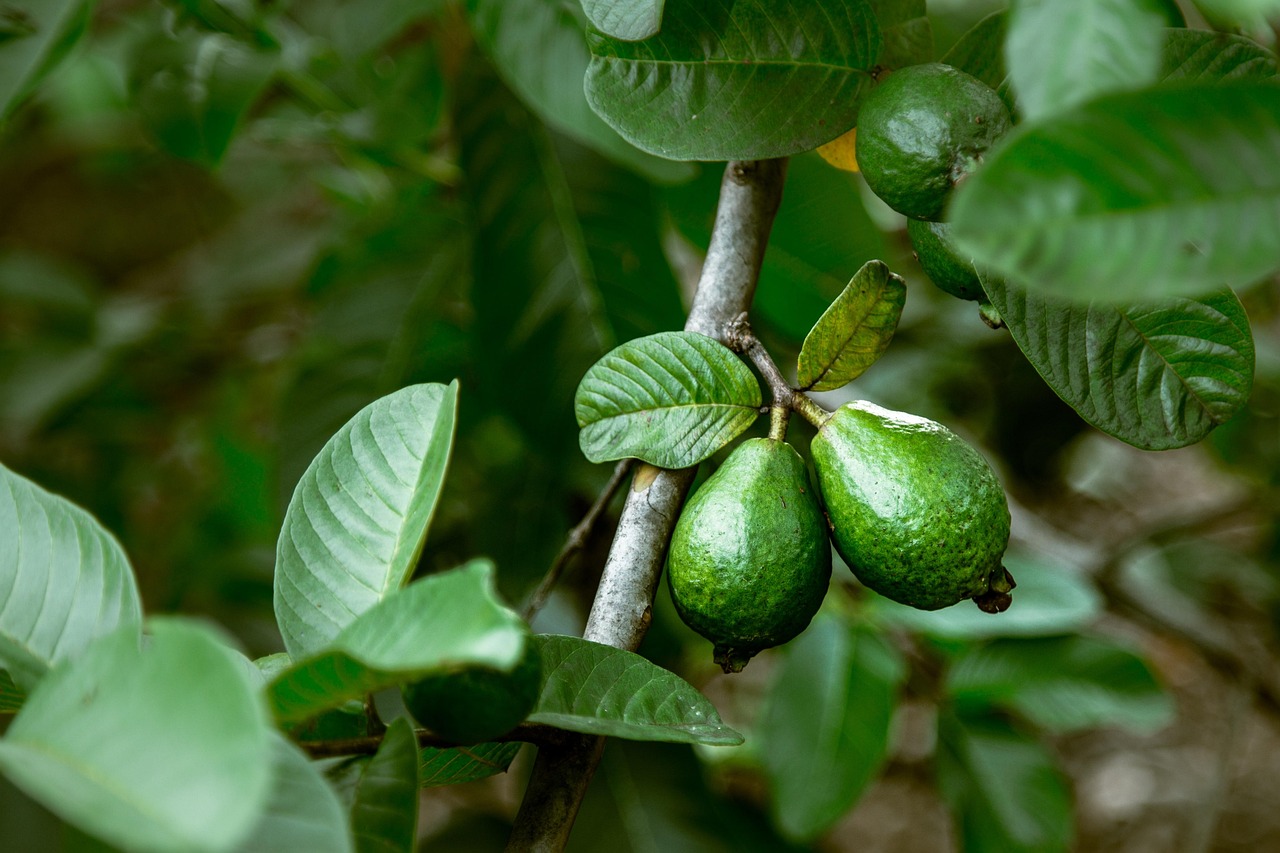
Guava is one of the most iconic tropical fruit trees, known for its beautiful white flowers and fragrant fruit. It thrives in warm climates and can be grown in gardens or pots. The fruit is not only visually appealing but has also been closely associated with human life for centuries.
This article explores the characteristics, cultural significance, history, and care tips for growing guava.
Basic Information
- Scientific Name: Psidium guajava
- Family: Myrtaceae
- Origin: Central and South America (from Mexico to northern South America)
- Appearance: A small evergreen tree that grows between 3 to 10 meters in height. It has oval-shaped leaves and distinctive white flowers with five petals and yellow stamens. The fruit is round, turning from green to yellow when ripe, with red or white flesh inside.
- Blooming Season: Early summer to autumn
- Fruit Season: Summer to winter
Cultural Significance Around the World
Guava is widely cultivated as a garden tree or street tree in tropical regions, holding different cultural meanings across various regions.
In Central and South America, it has long been grown in home gardens, symbolizing prosperity and family well-being. During festivals and celebrations, guava branches and leaves are sometimes used as decorations. Indigenous traditions also link the guava tree with life and natural forces.
In Southeast Asia, guava is commonly planted in household gardens, and in tropical regions, it is an everyday fruit tree. In some cultures, guava trees are believed to bring good fortune, and planting them in gardens is thought to improve household prosperity.
In India, guava is an essential part of traditional gardens and is sometimes considered sacred. It is used in religious offerings and, in certain regions, its leaves are incorporated into special ceremonies.
Historical Background
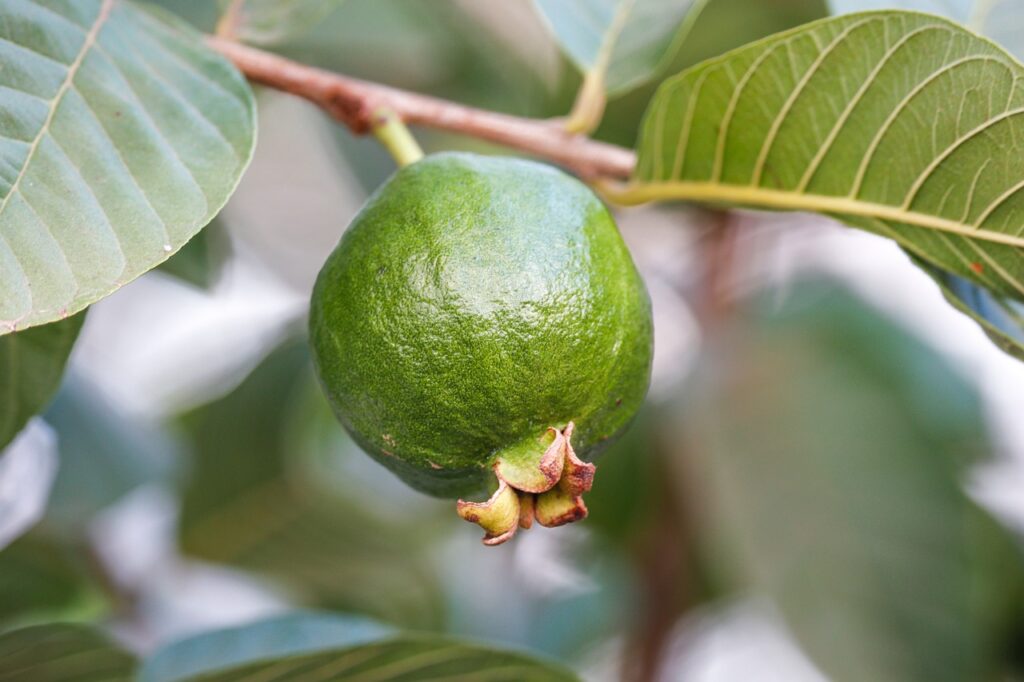
Guava has had a deep connection with humans since ancient times. It has been cultivated for thousands of years by indigenous people in Central and South America. When Spanish explorers arrived in the 16th century, they were fascinated by its rich aroma and abundance.
Spanish and Portuguese sailors introduced guava to tropical Asia and Africa, where it quickly adapted to local climates. By the 17th century, it had become a common fruit tree in India and Southeast Asia. The Caribbean also saw widespread guava cultivation, making it an integral part of the region’s landscapes.
In the 19th century, British and French botanists attempted to grow guava in greenhouses, and it gained popularity among the European elite as an exotic ornamental plant. Today, guava is widely cultivated in tropical and subtropical regions worldwide.
Gardening Advice
Guava is a hardy and easy-to-grow plant, but proper care ensures healthy growth and beautiful flowers.
Sunlight
Prefers at least six hours of direct sunlight daily. Insufficient light can affect flowering and fruit development.
Watering
While guava is drought-tolerant, it needs adequate moisture during the growing season. Water thoroughly when the soil surface dries out, but avoid overwatering to prevent root rot.
Soil
Well-draining, fertile soil is ideal. If planting in clay-heavy soil, mix in organic matter or sand to improve drainage.
Fertilization
Apply organic or slow-release fertilizer during the growing season to promote flowering and fruiting. Excessive fertilization may cause excessive leaf growth.
Pruning
Remove crowded branches to improve air circulation and prevent pests and diseases.
Cold Resistance
Guava is sensitive to frost. In colder regions, grow it in a pot and move it indoors during winter, or use protective covering.
Conclusion
Guava is a tropical fruit tree that produces fragrant white flowers and colorful fruit. In Central and South America, it symbolizes abundance, while in Southeast Asia and India, it has cultural and spiritual significance. Since the 16th century, it has been introduced worldwide, becoming a beloved fruit in tropical and subtropical climates.
With the right conditions, guava can provide flowers and fruit for many years. Growing guava in your garden or in a pot can bring a touch of the tropics to your home.

